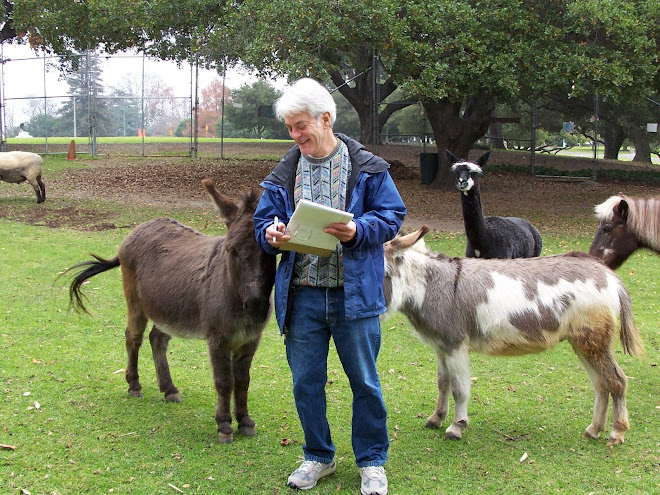(Above: Richard Schwartz)
At 7:45 in the morning on Oct. 21,
1868, the entire East Bay was shaken by a powerful earthquake on the Hayward
fault.
Many people were knocked down and
couldn't stand again until the shaking stopped. Some grabbed onto trees to
steady themselves, but the trees were swaying back and forth like giant pendulums.
Those inside buildings were tossed around like beanbags.
Fissures in the ground opened and
shut again, like a hungry mouth. Some people assumed it was the end of the
world and sat down to await their doom.
The quake – which the U.S.
Geological Survey estimates was between 6.8 and 7.0 on the Richter scale – opened
a giant fissure running from somewhere south of Hayward all the way north to
what is now Berkeley, ranging in width from six inches to six feet.
Not many people were killed, which
is not surprising since not many people lived around here at the time – only
2,400 along the whole length of the fault, compared to more than 2.5 million
today.
The most notable fatality was
Joseph "JW" Josselyn, a promising young clerk in the Alameda County
Courthouse in San Leandro – the county seat at the time - who was killed when
he rushed outside and was struck by a falling cornice.
Luckier was the workman who was 140
feet in the air, putting the final
touches on the main spire at the California School for the Deaf – now known as
the Clark Kerr Campus – in Berkeley when the quake struck.
"He held on for dear life
while it rocked back and forth four feet in either direction," says
Richard Schwartz, my favorite amateur historian, who uncovered all the stuff
I've just told you.
Schwartz himself is almost as
interesting as the stories he tells. A building contractor by trade, he
happened to be visiting the Berkeley Historical Society one day in 1996 when he
spotted a two-foot stack of old Berkeley Daily Gazette newspapers from 1900 to
1909.
The Historical Society was about to
throw them out because they were moldy, and they didn't want to run the risk of
the mold spreading to other collections.
"Hey, I'll take them," he
said. And these newspapers became the source material for three fascinating
books: "Berkeley 1900: Daily
Life at the Turn of the Century," "Earthquake Exodus 1906: Berkeley
Responds to the San Francisco Refugees," and "Eccentrics, Heroes and
Cutthroats of Old Berkeley."
Befitting his daytime job as a
contractor, they are sold not only in local bookstores, but also in hardware
stores.
Now he's on a new mission: To warn
us that what happened before will happen again.
"The USGS says major
destructive earthquakes happen along the Hayward Fault on the average of once
every 138 years," he says. "That means we've been overdue since 2006.
And we are woefully unprepared."
You can find out more at Spenger's Fish
Grotto in Berkeley on Oct. 27, when Schwartz will give a lecture, replete with
photos, sponsored by Builders' Booksource. Cost: $30, all of which will go to
Spenger's for dinner. (Schwartz and Builders' Booksource are donating their
time.)
But you must make your reservation no
later than Oct. 21 by calling Builders Booksource at 510-845-6874.
"The whole idea is to show
people all these photos and scare them into preparing," he says.

















